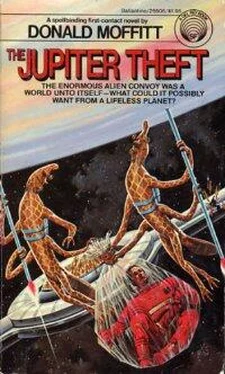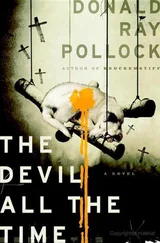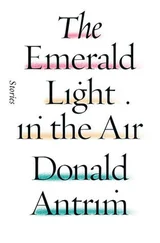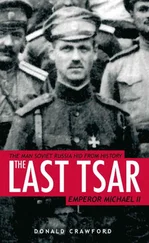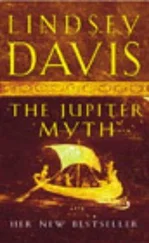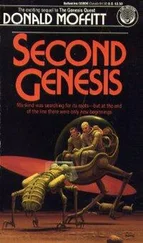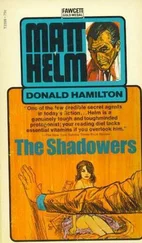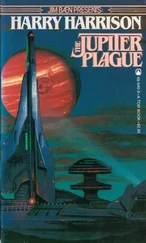The Cygnan squirmed helplessly in its wrappings, making angry sounds. Jameson dragged the writhing bundle to a corner, out of the way. Even then it tried to strike at him with its half inch of protruding tongue, but Jameson was able to keep himself out of reach. He took a moment to rip the sleeve off his borrowed coveralls and bandage his arm.
The show was still going on in the trifolium viewer. How much had he missed? The part about the complicated eclipses might have told him something useful about the Cygnans’ abandoned home. Ruiz would have been able to do wonders with a few clues about the nature of the double-star system they had emerged from. But Jameson didn’t dare try to turn the sequence back. He was afraid he’d lose it altogether and never find it again.
He was looking at a vast panorama of industrial effort. On a barren plain lit by the baleful light of that sky-filling moon, hundreds of thousands of Cygnans were toiling like ants. Great mining machines like thousand-foot metallic earthworms burrowed into the soil. On the arched horizon there was the bright flare of a rocket taking off.
With a start, Jameson recognized what he had taken at first for a squat pyramid sticking up out of the soil. It was the peak of those three skyscrapers that leaned together. Cygnans with barrel-wheeled bulldozers and beetlelike backhoes were digging them out. Other Cygnans were cutting away the metal framework and bearing it off. Jameson caught his breath. How many thousands of years had it taken for that city to be buried?
Now, almost like an intercut in a human film, he saw the Cygnans’ tremendous fleet being assembled in space. In the foreground was the triangular base of one of the environmental pods, miles across, with a swarm of service vehicles hovering around it. Perhaps a hundred miles farther out was the half-folded frame of an uncompleted ship, looking like the clawprint of an immense bird stamped against the curve of the gas giant that had been the Cygnans’ moon.
The scene spun to let him see the paired suns. They overlapped. The red sun was moving across the face of the white sun, so he knew that what he saw was not a trick of perspective.
The white sun was bigger.
During the ages it had taken for the Cygnan city to be buried, that sun had grown to perhaps twice its former size. Or else the red giant had shrunk. Or both.
This time the white sun was giving the red giant a bad case of indigestion. At what would have been full eclipse, Jameson saw a blinding white halo around the dull red disk of the giant. Then they began to pull apart. The red sun extruded a nipple. It swelled toward its brilliant companion. Skeins of fire stretched between the two.
The red giant shrank like a leaky balloon. The Cygnan observer had speeded things up again. How many Cygnan observers, over how many lifetimes? Hanging motionless beside it, the white sun bloated. It puffed up as he watched, dwarfing its diminishing mate.
Momentarily Jameson wondered how it was possible for him to see the stars in the same relative positions. If the screen was showing him a time-lapse version of eons of stellar evolution, then their minuet around each other would have speeded up to a whizzing blur, streaks of light across the void.
Then he realized that—of course!—the Cygnans were using their strobe trick to stop unwanted motion. The wobble must have been too rapid at this speed for even Cygnan synapses to handle, so the computer was doing it for the kiddies.
The process of engorgement seemed to have stopped. The glowing balls hung side by side against raw space, a cherry next to a peach.
The suns receded. He was looking out into deep space now. A profusion of stars burned against blackness. The Cygnans’ double star stayed in the mathematical center of the screen. Soon his eye could not separate them.
So, the migration had begun.
At what had to be at least a couple of light-years out, he began to wonder why the stars in his field of view weren’t changing color. Either the Cygnans weren’t yet traveling at anywhere near the speed of light, or the computer was compensating for red shift.
He was wrestling with that problem when the screen exploded.
A dazzling flash of light left him blinded. For an instant, through the haze, he saw a brilliant glare in the center of the screen. Supernova!
When his vision came back, the stars were rushing toward him as the screen zoomed to the limits of magnification. The library was about to show him something interesting.
The light went out like a dying light bulb and there was nothing except the engorged white star shining in space. The image must have been computer-enhanced. He could see a disk the size of a cotton ball.
The cotton ball began to wobble. The computer was manipulating the strobe effect—at a ratio of thousands of images to one—to show that it was dancing with … something!
Something invisible.
A background star became a smear of light and winked off. An instant later it reappeared and shrank to a point again. The stars immediately nearby were rippling, like objects seen through heat waves. By looking closely, Jameson could see that the rippling stars were lapping around a fairly well-defined circle where no background stars shone.
Something was bending light, swallowing it. The invisible something that was whirling in dervish circles around the white star that had fed on its substance.
There was only one thing in the universe that swallowed light.
Jameson watched in awe, hardly daring to blink, until his eyes were burning. The circling dance went on a long time—as long, it seemed to him, as the entire stellar sequence leading up to it had taken. He wished fervently that he had a watch so that he could time the relative duration. His eyes began to play tricks on him. The moving boundary where light splattered and disappeared seemed to become tangible: a black blot against the blackness of space. It was an illusion, he knew. The thing—the nothing— in the center of that blot could never be seen.
Now, with startling suddenness, the white star began to grow again. Its color changed to blue as it inflated to enormous size, bigger even than the red giant had been.
Blue supergiant! It had exhausted its hydrogen and become a helium star.
Now, in a blink, the black hole became visible—not the hole itself, but the terrible events in its accretion disk. For a moment of cosmic time there was a flash of hideous light as the Cygnan computer selectively shifted an X-ray source burning with the power of ten thousand suns to the visible spectrum.
The screens went blank.
Before Jameson could move, the room was filled with hissing Cygnans, Triad and Tetrachord among them. They saw the trussed-up Augie and set up a din that sounded like the shrill of a roomful of teakettles. There was a blur of flashing movement in Jameson’s direction. He flung up an arm to protect his face, then felt a searing flash of pain that wiped him out of existence.
Tetrachord tugged gently at the leash. Jameson gagged as the loop of cord, threaded through his nostrils and dangling down his throat, tickled his pharynx. Then the moment of nausea passed, and he ambled obediently down the concave sidewalk after the two aliens.
The kitten was in his arms. He’d managed to scoop the animal up before they led him off in disgrace. He damn well wasn’t going to leave it to Augie’s tender mercies.
The tether wasn’t too uncomfortable once he got used to it. Jameson once had been fed by a tube through his nose in the hospital, and he’d found that it looked worse than it felt. It made the back of his throat feel sore, that was all, and he didn’t want to think about what would happen to his septum if he resisted the tug of the leash. But all the same, he was glad he hadn’t been conscious when the cord was inserted, and he dreaded its removal.
Читать дальше
